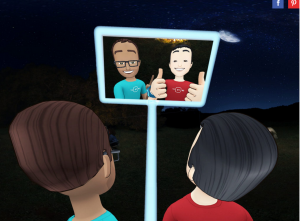 In 1999, the world chose Yahoo’s Geocities as it’s third most visited website. Ten years later, the once vibrant city shut its doors, and when that happened many people felt that the world lost an important part of 90’s history. Perhaps you were one of the adopters of Geocities. It was characterized by busy backgrounds, website traffic hit counters, miserable GIFs and Comic Sans. These are all things that characterized not only every Geocities site, but also most of the Internet.
In 1999, the world chose Yahoo’s Geocities as it’s third most visited website. Ten years later, the once vibrant city shut its doors, and when that happened many people felt that the world lost an important part of 90’s history. Perhaps you were one of the adopters of Geocities. It was characterized by busy backgrounds, website traffic hit counters, miserable GIFs and Comic Sans. These are all things that characterized not only every Geocities site, but also most of the Internet.
If you are unfamiliar with Geocities, or perhaps you would just like to bathe in its nostalgic glory, I’ll leave you with a link for the Geocities-izer. The Geocities-izer will take any website, break its CSS layout and cram it with GIFs and music. See the current New York Times in true 1999 glory.

Geocities was the first place where anyone could create their own website for free. It was wildly popular, but its features were limited to one page. Now, the most sought-after features of website are almost opposite that of what Geocities offered. Nobody wants music, instead, they embedded, streaming video. They don’t want animated GIF’s, instead they want a layout that has multiple columns and looks the same between web browsers. Most of all, people want more than one page– to be able to sell products, to blog about their travels and to find other people through some sort of network. CSS3 and HTML5 standards glued the Internet into a more coherent and deliberate network that seems more like a finished product than a programmer’s hobby.
Although I guess that it’s no surprise that the Internet gradually favored more interactive media, there is something so comforting about viewing a Geocities page, something nostalgic. I think that browsing a Geocities site is just like listening to a dialup modem. They are both nostalgic experiences, but neither one of them is particularly pleasant.



